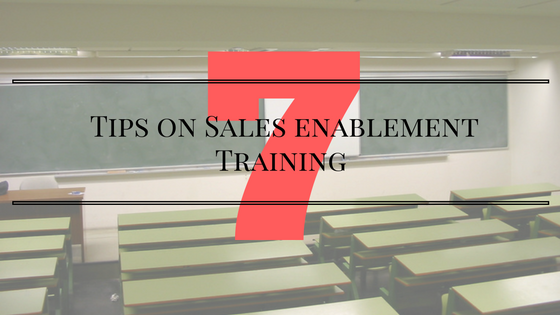On my first sales enablement project, I quickly realized the imperative for sales enablement training. I launched an iPad sales enablement tool to help sales reps have more effective sales engagement techniques. As I completed my first demo on the tool, a sales rep walked up to me and said, “what does swipe mean?”
Changing my perspective
This rocked my world, I figured everyone in a B2B technology company knew how to swipe but this rep was not alone. I quickly discovered that some reps lacked basic knowledge regarding operating an iPad or other mobile device. And then once you moved into the nuances of using a sales enablement tool, a lot more required help leveraging the tool.
So what did I do?
At this point, I decided to package a rollout to the field with a lot of sales enablement training. I created both in-person hands on training along with the creation of short videos and tailored webcasts to regional sales teams. Then I went out on the road and executed. In the span of about a year, I personally touched over 7,500 sales reps across 50 sessions. And my surrogate trainers touched another 3,000 sales reps.
Along the way I picked up a few tips on how to be most effective in training the reps on sales enablement solutions.
-
Assume they know nothing!
What I learned is that you cannot overestimate a reps skills when it comes to using new tools. You have to start at the beginning and work through every aspect of the training in small steps. I offered beginner classes and made sure it was clear that they could come with any question- and they did.
-
Training has to be hands on.
Don’t lecture them on how to use the tool, build the training so they see it and then try it. This lends itself to doing the training in person. Feasibility of this varies with each organization, and circumstance might dictate virtual training. Any online training should contain time to practice what they just learned.
-
Sales enablement training needs to be in context of their role.
It was much easier for a sales rep to learn how to use a sales enablement tool when they are working on a pitch around a real life sales scenario. If the training on the tool can be embedded with other training topics, all the better. Not only will they learn the tool faster, they will be more likely to be engaged.
-
Front line managers need to certify.
The nuances of using a sales enablement tool can easily be lost. From a sales kick off to the first sales engagement, a sales rep that learns how to use a tool can quickly loses those same skills. A front line manager reinforcing the training by certifying each of their reps on the tool goes a long way to getting the training to stick. I witnessed a direct correlation between sales teams that offered certification.
-
Make the sales enablement training required.
This will be a challenge with most sales training organizations who want to focus on product training, as opposed to selling skills. The reality is that your organization invested in a sales enablement tool, complete the investment with paired training on the tool. Don’t expect people to use the tool unless they are trained on it.
-
Follow up with those who use the tool and those who do not.
Hopefully you track usage, if you aren’t up to speed on measuring sales enablement projects, check out where to start with sales enablement and 6 pitfalls of measuring sales enablement.
- Users – Talk to users and find out what works and where they are having trouble. Create short online videos to address any gaps they may be having.
- Non users – Interview those who use the tool and do not use it. Find out why they aren’t using the tool. It might be training, or it might be something else. If it’s training or confidence, get back in front of them and repeat the training. Make it simpler and more hands on.
-
Repeat and Reinforce.
Every sales enablement professional must know that you have to repeat and reinforce your training. Sales turnover dictates that repetition and reinforcement must be built in from the start.


4 thoughts on “7 Tips on Sales Enablement Training”